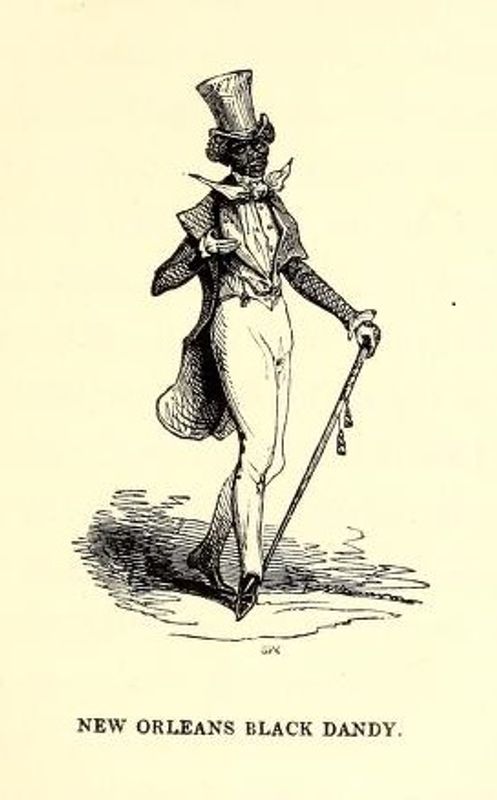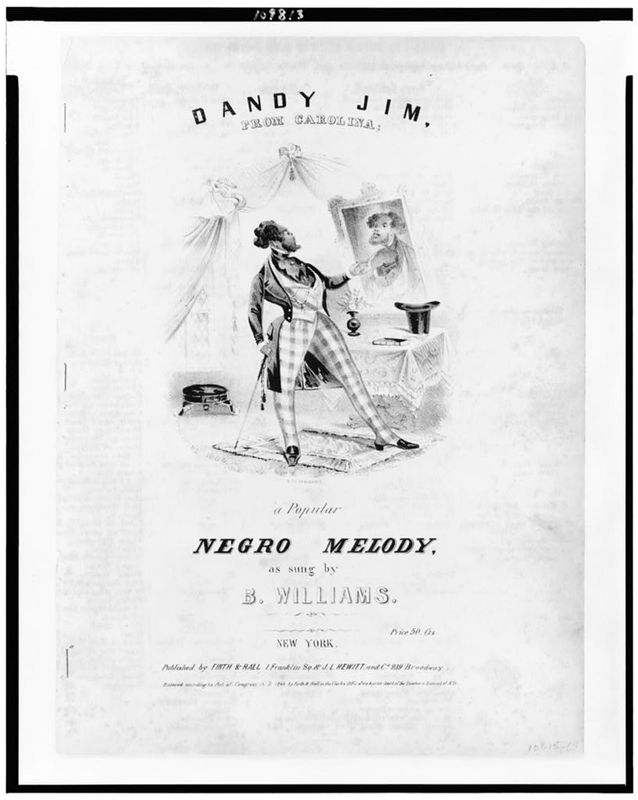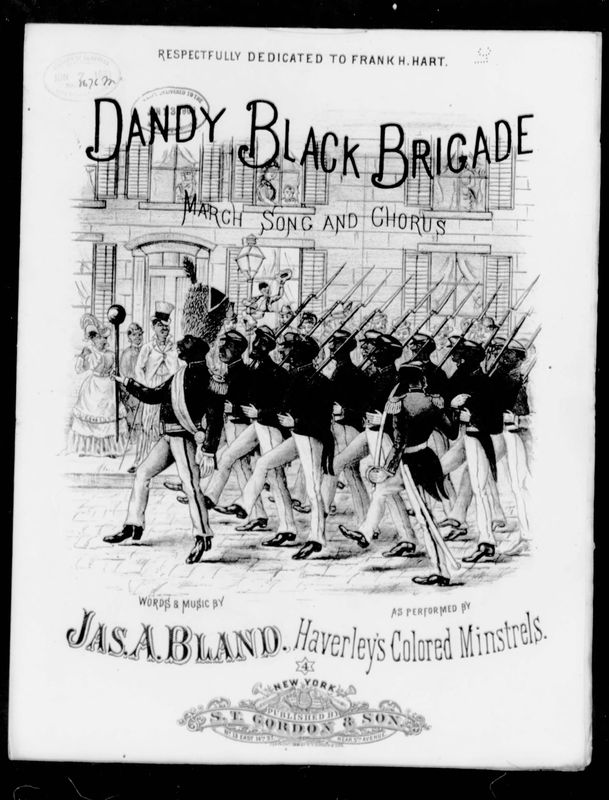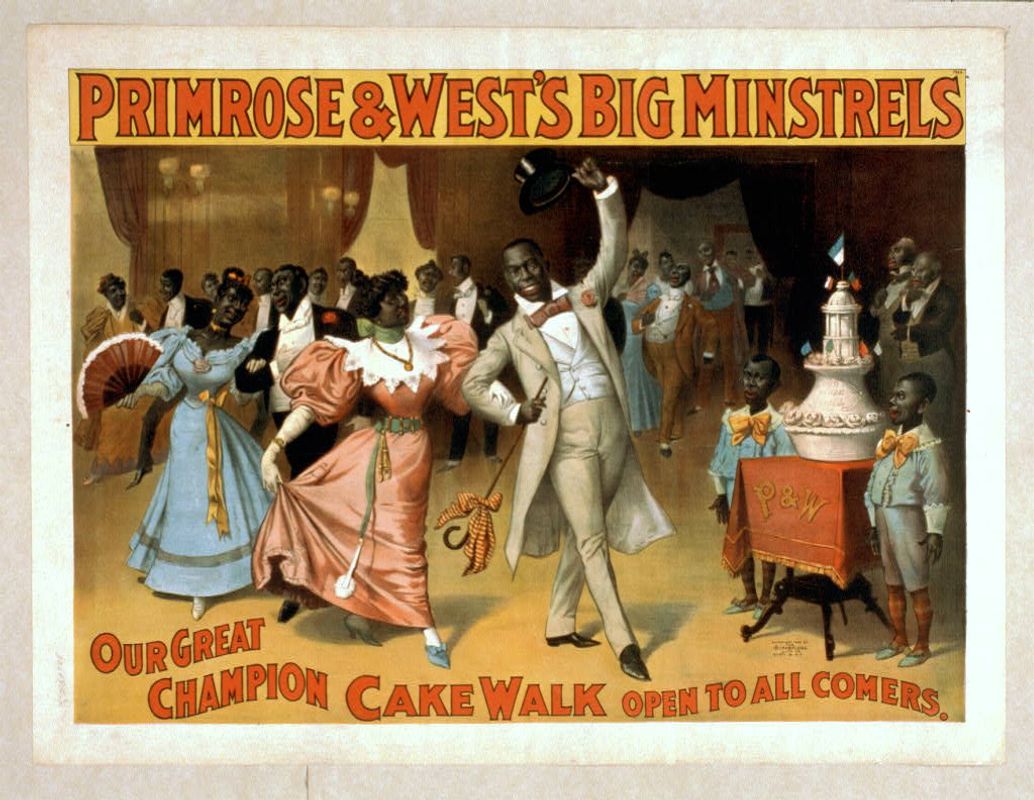Dandyism in Dance
Celebrating Black History Month
WRITTEN BY AYO JANEEN JACKSON
WEEK 1
A mutation from the Cakewalk to Capes
The Joyce Theater celebrates Black History Month by uncovering hidden narratives that set the stage for shows we enjoy today, from Broadway to The Joyce Theater. This initiative will investigate how Dandyism appears in dance. This is the first of four blog posts that will highlight how Black men have shaped American forms of dance and entertainment.
We will explore how Dandyism shows up within several different contexts: Minstrelsy & Vaudeville, The Harlem Renaissance, and Ballet & Contemporary Dance forms.
This year’s celebration was inspired by the MET Gala’s 2025 theme: Superfine: Tailoring Black Style. The exhibition’s guest curator, Monica Miller, authored “Slaves to Fashion: Black Dandyism and the Styling of Black Diasporic Identity.” In this book, Miller examines “...moments in literary and visual culture in which Black male subjects can be seen understanding, manipulating, and reimagining the construction of their images through the dandy’s signature method: a pointed redeployment of clothing, gesture, and wit.”
The Black body is in constant political discourse as the history of the African person in America challenges the fundamental principle of American democracy set forth in the Declaration of Independence, that “all men are created equal.” Even in the hyphenated space between “African” and “American” lie questions related to the legitimacy of Black citizenship.
The Black body is in constant political discourse as the history of the African person in America challenges the fundamental principle of American democracy set forth in the Declaration of Independence, that “all men are created equal.” Even in the hyphenated space between “African” and “American” lie questions related to the legitimacy of Black citizenship.
A dandy is one who studies clothing and uses it to state their place within a social hierarchy-imagined or otherwise. I use the word "fabric" to describe what America is made of. America is woven together with revolution, civil war, and the struggle for civil rights. How then does a Black performer embody a freedom they are often denied? They mimic the illusion of the American Dream. The use of “fabric” as a metaphor for American ideologies forces a deeper look into how Black performers over the last century resisted oppression and interrogated their relationship to the broader society.
From the moment enslaved Africans arrived in the New World, they were forced to negotiate means of power through dress and gesture. Minstrelsy, initially a form of parody in European medieval entertainment, later evolved in America as a racial caricature. Black performers reinterpreted this art form, infusing it with African rhythms and virtuosic style. They created something uniquely their own, paving the way for future forms of movement and entertainment.
Dandyism in dance is vulnerability, challenging our unconscious bias regarding the ‘working body.’ Gestures like a loose-wristed wave or a body en l’aire suggest ease. A roll through the body. The chin tilted back—exposed.
It is play, like oscillating from a wild, knees-up jump to a languid, contemplative walk. These gestures all take time. They are luxurious, and dandyism in dance is a show of luxury that questions societal conceptions of race and class. It is a performance that interrogates masculinity and presents bodily freedom as a new representation of Black American manhood.
Black performers have continuously stitched together African cultural memory and the constraints of enslavement, reclaiming parodies of themselves, resewing identities, redefining, and remembering. This ongoing mutation of dance styles continues to strengthen itself and expand American culture.
What Is a Black Dandy? | Superfine: Tailoring Black Style
Check out this video produced by The Met to learn more about the Black Dandy and this year's MET gala theme.
PHOTOS COURTESY OF LIBRARY OF CONGRESS.






